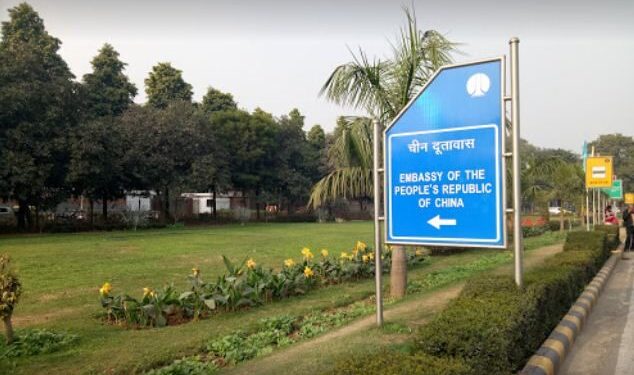Dr. DK Giri
Although reports of a trade deal with Taiwan have not been officially confirmed by India, Beijing has issued a veiled warning to New Delhi. Obviously, it is not just India-Taiwan. Beijing is reacting to the latest development in the Quad, and the ensuing defence pact between India and the US. As New Delhi decides to take on China, the latter makes a desperate attempt to bully India.
Recently, India participated symbolically in the National Day of Taiwan, drawing a sharp response from Beijing. The Chinese embassy in New Delhi issued an advisory to the Indian media against felicitation of Taiwan on its National Day. New Delhi reacted by saying that media in India is free and vibrant unlike in China. The cooperation between Taiwan and India is rising especially since a pro-independent Prime Minister took charge in Taiwan. Trade between the two countries is on the rise and Taiwan has a trade office in Mumbai.
On a serious note, observers interpret Beijing’s diplomatic advisory to India as a military threat. The vibe emanating from China points to Chinese military taking action if New Delhi were to seal a deal of any sort with Taiwan. Since containing China consists of a multi-pronged strategy, it is in order that we factor the development in the Quad. New Delhi has invited, for the first time, Australia to participate in the joint naval exercise along with Japan and the US. The partners in Quad have responded warmly to India inviting Australia to join the Malabar Naval exercise.
Arguably, the US views Quad as a countervailing body to China. But for long-term partnership between these four democracies, Quad should mean more than China. It should be a partnership based on shared values and interests including rule of law, freedom of navigation, respect for territorial integrity and sovereignty, peaceful resolution of disputes and free trade. India-Pacific region draws attention from other countries like Germany, UK and France. Germany, which is holding the EU presidency at present, is spearheading an India-Pacific strategy for the European Union. Germany has hinted that any engagement with India will always have the China angle in the equation. Out of all the four members in Quad it is India that shares a long border with China and is facing Chinese hostility for many years. So, the onus is on New Delhi to keep the Quad going for a secure and conflict-free India-Pacific region.
The third thorn in China’s flesh is the India-US defence deals in the forthcoming 2+2 ministerial meeting. India and US are going to sign the Basic Exchange and Co-operation Agreement, which pertains to geospatial intelligence, and sharing information on maps and satellite images for defence. The BECA is sequel to LEMOA and COMCASA; these three defence pacts are considered to be the troika of foundational pacts leading to deeper military co-operation.
On the pacts, the Logistics Exchange Memorandum of Agreement (LEMOA) was signed in August 2016. It allows each other’s military to replenish from others’ bases access supplies, spare parts and services from other countries’ land, air and ports, which then can be reimbursed. Communications Compatibility and Security Agreement (COMCASA) signed in 2018 after the first 2+2 dialogue allows US to provide India with encrypted communications equipment and systems. In simpler terms, it is like WhatsApp or Telegram for the two militaries. While LEMOA lays the bases for mutual trust on exchange of valuable assets, COMCASA connects two militaries and BECA facilitates sharing classified information in real time without any risk of being compromised. All these pacts put together mean both militaries coming closer and building trust in the face of an increasingly aggressive China.
There are those who might read a US strategy in these pacts to wean India away from its dependence on Russia. India was putting off US overtures because of deep-rooted links between Pakistan and Pentagon. The US could still rely on Rawalpindi for access to an exit from Afghanistan. Both these premises have changed. The US is successfully nudging India to engage in Afghanistan, partly to replace Pakistan and the Chinese aggression has pushed New Delhi into America’s embrace.
Apparently, New Delhi has blown the bugle although not so loud against China. The India-Pacific region manned by Quad is the real bulwark against Chinese aggression. New Delhi is the critical anchor in making India-Pacific a viable strategic instrument. Japan may have originated the idea and the US may have given it a push but it is India that has made Quad happen. Taiwan is a pinprick for China, but it should not become another Tibet.
The writer is Professor of International Relations, JMI. INFA






































